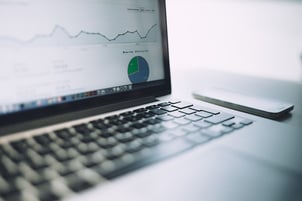For your industrial systems to join the IIoT, they’re going to need a digital twin.
 Maintenance technology and standards have come a long way over the past several decades.
Maintenance technology and standards have come a long way over the past several decades.
They started with reactive maintenance, where operators would wait for a component in a system to fail and then perform maintenance, replacing the broken part with a new one.
This caused unexpected downtime, which impacted business operations, leading to lost revenue and increased operational costs.
As businesses got smarter, they identified opportunities to increase efficiency and started implementing preventive maintenance based on routine repairs. For example, every three years a business might swap out an industrial device or component during a planned outage, to make sure equipment doesn't fail.
One of the downsides to routine replacement is that equipment may be replaced long before it actually needs to be, resulting in lost value from an industrial system or component. But as the industrial Internet of Things continues to roll out and we start attaching sensors to our industrial systems, a new form of maintenance called predictive analytics has become a key objective for many enterprises. Predictive analytics is all about taking the big data that our industrial systems and components generate and running that data against cognitive computing and artificial intelligence systems, to obtain insights into what might happen in the future.
Predictive analytics is all about taking the big data that our industrial systems and components generate and running that data against cognitive computing and artificial intelligence systems, to obtain insights into what might happen in the future.
One example is predicting when a pump or motor might fail based on data collected from those devices—like run time, average running temperature, load during runtime, and so on. One of the tools being utilized in predictive analytics to help sort through that data is a concept called a digital twin.
Gartner lists the concept of digitals twins as one of its Top 10 Strategic Technology Trends for 2017. Digital twins are dynamic software models of a physical thing or system.
Kind of sounds like a traditional industrial HMI, but the concept of a digital twin takes things much further than obtaining situational awareness and control of our industrial systems. Digital twins are used for predicting what our industrial systems and devices might do in the future, given certain physical, digital, or environmental conditions or events.
Translation: they’re used to predict and even prevent events happening in the future.
 A digital twin is basically a virtual model of a process, product, or service. It might look like a digital version of a wind turbine, that shows how fast the blades are rotating, how much energy is being generated, etc.
A digital twin is basically a virtual model of a process, product, or service. It might look like a digital version of a wind turbine, that shows how fast the blades are rotating, how much energy is being generated, etc.
The goal of the digital twin is to digitally represent a physical device, so that the device can be used in predictive analytics models. It’s almost like a bridge between the physical world and the digital world.
The "big data" we talk about when we mention the IIoT is actually data reported in the form of electrical signals from industrial sensors, machines, and systems.
But cloud computing systems don't understand electrical signals. For cloud computing systems like advanced predictive analytics software to actually learn from or do anything with our devices in the physical world, the information those physical devices generate must first be digitized.
To learn more about how predictive analytics and cloud computing are being used to build the industrial Internet of Things, check out the 2017 State of the IIoT Whitepaper.


